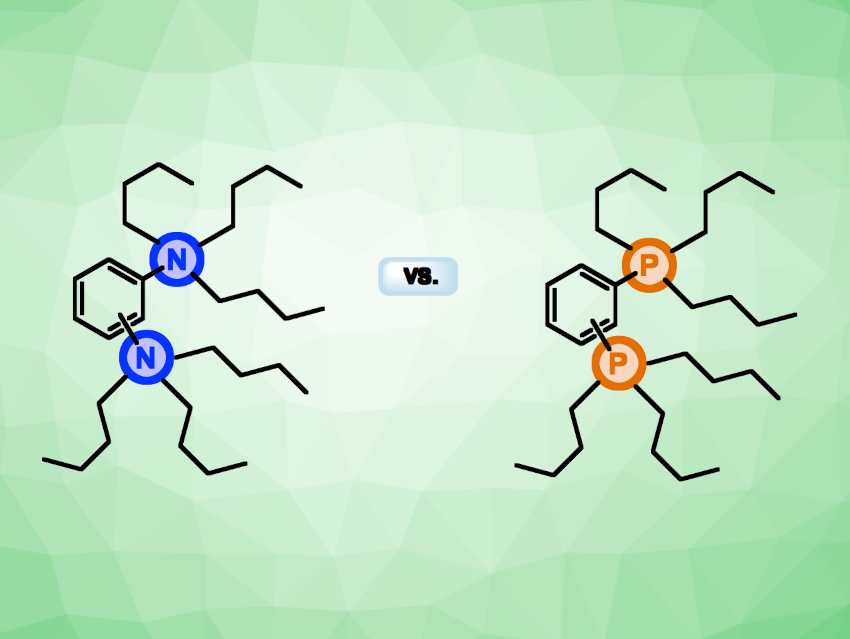Quaternary ammonium compounds (QACs) have served as essential disinfectants and antiseptics, combating the spread of pathogenic bacteria. The mechanism of action of these amphiphilic compounds involves electrostatic interactions with negatively charged bacterial membranes via a cationic “head” and membrane disruption by insertion of their lipophilic “tails”. However, bacterial resistance to QACs is a present and urgent concern. Accordingly, there has been interest in quaternary phosphonium compounds (QPCs) as alternative antimicrobials. Researchers aim to develop minimally toxic amphiphilic QPCs with maximized antimicrobial activity.
William M. Wuest, Emory University, Atlanta, GA, USA, Kevin P. C. Minbiole, Villanova University, PA, USA, and colleagues have designed and synthesized a series of 20 new, “bushy-tailed”, multicationic QPCs (example structure pictured above on the right). These compounds feature multiple short alkyl or aryl chains. The researchers prepared the compounds via the addition of tertiary phosphines to the corresponding electrophilic precursor. For example, biscationic structures with a p-xylene core starting from α,α’-dichloro-p-xylene, triscationic amphiphiles with a mesityl center starting from mesitylene tribromide,
The team explored the bioactivities of the synthesized QPCs against seven bacterial strains. The bioactivities were assessed via their minimum inhibitory concentration (MIC), and the cytotoxicity was evaluated via red blood cell hemolysis assays. The researchers identified several novel structures featuring a trishexylphosphonium residue that displayed broad-spectrum, single-digit micromolar activity and favorable therapeutic indices. Overall, the work demonstrates the promise of this new set of multicationic phosphonium compounds for use as disinfectants.
- Bushy‐Tailed Multicationic Quaternary Phosphonium Compounds: Potent Amphiphilic Disinfectants with Promising Therapeutic Indices,
Diana Rachii, Elise L. Bezold, William M. Wuest, Kevin P. C. Minbiole,
ChemMedChem 2024.
https://doi.org/10.1002/cmdc.202400546




